Potřebujeme váš souhlas k využití jednotlivých dat, aby se vám mimo jiné mohly ukazovat informace týkající se vašich zájmů. Souhlas udělíte kliknutím na tlačítko „OK“.
ASTM E2732-11
Standard Practice for Responder Family Support Service (Withdrawn 2020)
Automaticky přeložený název:
Standardní praktiky pro službu Responder podpory rodiny
NORMA vydána dne 1.1.2011
Informace o normě:
Označení normy: ASTM E2732-11
Poznámka: NEPLATNÁ
Datum vydání normy: 1.1.2011
Kód zboží: NS-45942
Počet stran: 11
Přibližná hmotnost: 33 g (0.07 liber)
Země: Americká technická norma
Kategorie: Technické normy ASTM
Kategorie - podobné normy:
Anotace textu normy ASTM E2732-11 :
Keywords:
emergency management, emergency response, family support during emergencies, responder families, ICS Number Code 11.160 (First aid)
Doplňující informace
| Significance and Use | ||
|
This practice applies to responders who are charged with and respond to all types of emergencies whether within or outside of their jurisdiction. Two types of incidents are distinguished, depending on their location. If the responder’s family is not at risk, the goal is to provide support to the family in coping with issues arising from the responder’s absence. This would be the case, for example, if the responder responds to incidents outside the local jurisdiction or responds to an extended incident within the local jurisdiction. The goal is to ensure that the responder’s family does not suffer undue hardship because of the responder’s service. If the emergency is of a type that the responder’s family may be at risk, then the goal is to ensure that the responder’s family does not acquire risk beyond that of the general public due to the responder’s performance of duty. The commander of a local jurisdiction would most likely choose to waive the implementation of this practice for locally managed incidents, such as routine fires, police actions or other such routine incidents, because it is intended for larger-scale emergencies where the general public and responder families may be at risk. Care must be taken to ensure that the responder’s family does not receive, and is not perceived as receiving, preferential treatment during a local emergency. Nothing in this guide precludes an AHJ from expanding services for its own use or increasing requirements for personnel. Each AHJ is encouraged to add to this basic guide as needed to meet local needs. It is recognized that a one-size approach will not fit all. Emergency management planning needs to be developed based on the risks, vulnerabilities, and capabilities of the entity. With these considerations in mind, a tiered approach should be taken that allows an entity to develop a Family Support Service based on its needs and constraints, while providing guidelines for growth as necessary. In recognizing the importance of alternative or backup facilities, this guide should be used to aid entities in developing self-sustained redundant resources. This guide is based upon current best-business practices. This practice is based on existing resources and experience related to the development of emergency response guidelines. This experience base is translated into a practice to help facilitate response agencies toward the goal of building operational guidelines for the emergency phase of incident response. The practice is intended to enhance the ability, knowledge and understanding of personnel, agencies, or departments that respond to an incident. This practice should be incorporated as a reference in emergency operation plans and multi-agency coordination systems (MACS) guidance to assist in policy formulation and development of strategic objectives consistent with the objectives and needs of the incident command system (ICS). For incidents encompassing multiple agencies, multiple victims, and damage to environment and infrastructure, emergency operations centers (EOCs) and MACS are expected to be operating at least at the local level. It is imperative that representatives from the EOCs and MACS be aware of and understand the role of the support service agency (SSA) to ensure responder safety and mental well-being. This practice delineates the responsibility of the SSA in considering the care criteria for understanding the procedural basis and types of care necessary to provide adequate support to responder families. This practice delineates procedures necessary for the support process to identify the need for appropriate levels of care and supporting service. All of these support services may involve some form of physical security to within an acceptable level of risk. This practice provides the minimum requirements for the attention that responder’s dependents or families, or both, should receive in an emergency to ensure they receive the same level of care afforded the general public. This practice delineates the role of non-emergency response focused municipal/governmental departments and volunteer organizations in serving as an SSA (that is, support group to responders). |
||
| 1. Scope | ||
|
1.1 This practice sets forth a standard approach for designated personnel in public, private and not-for-profit organizations that provide recreational, cultural, educational and related services to the public to respond in a support role providing assistance, and as needed to the local family of a responder on assignment in an emergency situation. 1.2 The “responder,” with regard to family support services, may be a first-responder from a variety of responder disciplines (for example, law enforcement, fire service, emergency medical services, public health) or supplementary personnel and may be paid or volunteer. 1.3 This practice describes the roles, responsibility, and actions necessary for designated personnel to provide family care-related services to assigned responder family members under conditions of service during an emergency. 1.4 This practice outlines the approach and system for interrelating with responders and their designated family members in times of emergencies to alleviate responders’ concerns and fears for their family during an emergency assignment. 1.5 This practice does not supersede any current or future official Federal, State, Tribal, or local government policies, laws and protocols that might subsequently be advanced. 1.6 This practice identifies other peripheral professional personnel that could be assigned to assist the designated responder family members during an emergency. 1.7 This standard does not purport to address all of the safety concerns, if any, associated with its use. It is the responsibility of the user of this standard to establish appropriate safety and health practices and determine the applicability of regulatory limitations prior to use. |
||
| 2. Referenced Documents | ||
|
Podobné normy:
Historická
1.2.2007
Historická
1.2.2007
Historická
1.2.2007
Historická
1.2.2007
Historická
1.6.2014
Historická
1.3.2009


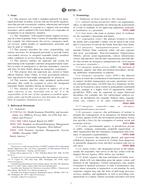
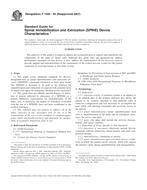 ASTM F1556-94(2007)..
ASTM F1556-94(2007)..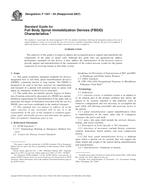 ASTM F1557-94(2007)..
ASTM F1557-94(2007)..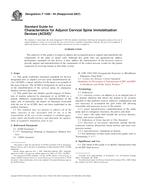 ASTM F1558-94(2007)..
ASTM F1558-94(2007)..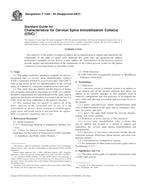 ASTM F1559-94(2007)..
ASTM F1559-94(2007)..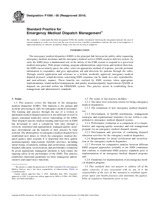 ASTM F1560-00(2014)..
ASTM F1560-00(2014)..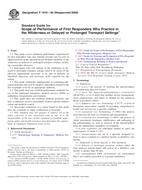 ASTM F1616-95(2009)..
ASTM F1616-95(2009)..
 Cookies
Cookies
